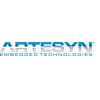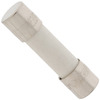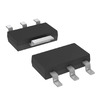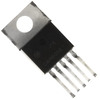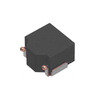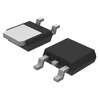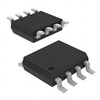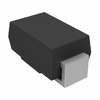Understanding the Differences Between 74HC595, 74LS595, 74HC164, and MCP23017
Shift registers are basic components in digital electronics, offering streamlined solutions for managing data sequences and expanding output capabilities. Widely used across various applications, these versatile components enable efficient data handling in projects like LED displays and control systems. This article explores popular shift register models—such as the 74HC595, 74LS595, and 74HC164—highlighting their unique features, applications, and functionality. Additionally, it examines the MCP23017, an I2C input/output expander, presenting it as a flexible alternative for projects needing extended GPIO capacity. By understanding the distinct roles these components play, you can make informed choices to optimize their designs for performance, power efficiency, and reliability.Catalog
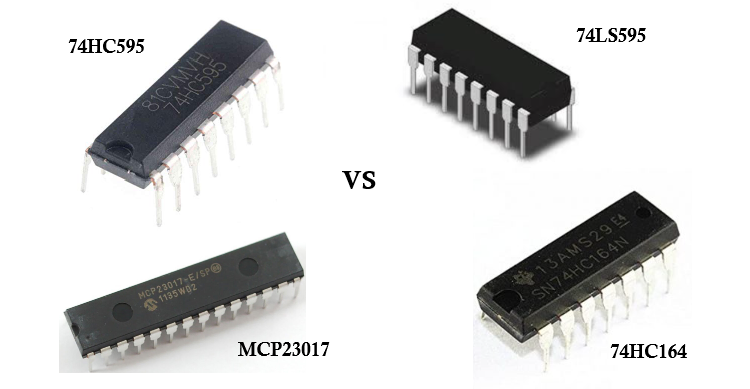
Distinctions Between 74HC595 and 74LS595 Shift Registers
Shift registers, epitomized by the 74HC595 and 74LS595, play a key role in digital electronics by facilitating the transformation of serial data input into parallel output. They find application in a variety of fields, from the intense allure of LED displays to the intricate data storage processes within microprocessors.
The 74HC595 embodies a modern perspective through its use of CMOS technology, emphasizing efficiency and swift performance. Embedded within its design is an 8-bit serial-in, parallel-out feature, alongside distinct clock controls for both shift and storage registers, accentuating its versatility. You can often harness this adaptability in cascading applications to enhance performance while curbing energy consumption. Moreover, the notable high input impedance of CMOS transistors in the 74HC595 leads to diminished power requirements. This aligns with the overarching ambition of sustainable energy utilization, ideal in the crafting of low-power innovations like portable or battery-operated devices. It's observed that you tend to favor the 74HC595 when their endeavor involves minimizing energy demands without sacrificing performance.
Conversely, the 74LS595 is built on durable TTL technology, which leverages BJT transistors. Despite its naturally higher power consumption compared to CMOS components, its rapid operation endears it to numerous applications focused on performance. Constructed with a serial-in, parallel-out configuration akin to the 74HC595, the 74LS595 is a steadfast choice for situations where power usage is secondary to consistent and robust functionality. You can engage with legacy systems or in settings where power consumption concerns are minimized often gravitating toward the reliability of the TTL-based 74LS595, seeking assurance in its tried-and-true architecture.
Exploring The Unique Characteristics of the 74HC595 and 74HC164
Shift registers, like the 74HC595 and 74HC164, play major roles in digital electronics, serving as key tools for data storage and transmission. These devices adeptly convert serial data into parallel outputs, fostering effective communication between processors and peripheral components.
The 74HC595 shift register is designed with latches that ensure data outputs remain stable, preventing sudden alterations with each incoming clock pulse. This property is mostly valued in applications where delivering consistent and trustworthy data holds substantial importance. Meanwhile, the 74HC164 does not incorporate such buffering, which results in output bits changing immediately upon receiving a clock pulse. This feature makes it suitable for scenarios where rapid data changes are unobjectionable.
A notable difference is found in their cascading capabilities. The 74HC595 boasts a dedicated Q7 pin for easy cascading of multiple chips, streamlining the process for complex data management tasks requiring extensive circuitry without overwhelming the design. On the other hand, the 74HC164 lacks this inherent feature, demanding alternative strategies for connecting multiple chips. Resetting mechanisms also vary between the two registers. The 74HC595 supports a synchronous reset that synchronizes with clock pulses, offering precise control over reset operations. In contrast, the 74HC164 requires an asynchronous reset method, which may necessitate different timing strategies but offers the advantage of flexibility under particular circumstances.
Comparing the 74HC595 Shift Register and MCP23017 GPIO Expander
The MCP23017 functions in a distinct manner compared to the 74HC595, primarily offering enhanced capabilities as a port expander by utilizing the I2C interface. This component provides 16 additional I/O pins, adding a layer of complexity with its advanced interrupt features. You might find this device appealing for projects requiring more sophisticated configurations. Nevertheless, the reliance on the I2C bus means it often operates at a slower pace, which might be worth pondering in scenarios sensitive to timing.
Through practical insights, the selection between the 74HC595 and MCP23017 is notably dictated by factors like accessibility and flexibility. For more complex devices necessitating extended I/O functionality, the MCP23017 proves advantageous. Conversely, the simplicity of the 74HC595 makes it a popular choice when direct management of components such as LEDs is desired, emphasizing a preference for streamlined applications.
When examining other technologies, SPI expanders present an enticing alternative with operational speeds surpassing those of I2C. Despite this, they do not reach the swiftness inherent in conventional shift registers. In actual applications, many practitioners observe that although SPI expanders boost data transmission efficiency, opting between SPI and I2C often revolves around additional elements like the system's framework and specific project demands.
About us
ALLELCO LIMITED
Read more
Quick inquiry
Please send an inquiry, we will respond immediately.
Frequently Asked Questions [FAQ]
1. What is 74HC595 used for?
The 74HC595 serves as an 8-bit shift register, enabling the simultaneous control of eight outputs while economizing on microcontroller pin usage. Ideal where microcontroller I/O conservation is preferred, its integration within projects extends output capabilities without adding complexity. Frequently utilized in LED matrices, it allows for efficient multi-LED management, capturing the necessity for controlled, intricate displays.
2. What does a shift register do?
A shift register is a digital circuit facilitating data movement from input to output through connected flip-flops with a synchronized clock signal. Its dual-mode capability in serial and parallel formats makes it a cornerstone in digital electronics. In practical applications, shift registers adeptly convert serial data—often from sensors or communication interfaces—into a parallel format tailored for data manipulation or display, ensuring smooth data handling and clear presentation.
3. What does a 74HC595 do?
The 74HC595 operates with a serial-in parallel-out protocol, receiving data serially and distributing it in parallel. This function substantially elevates microcontroller output options, accommodating multiple parallel outputs. You can leverage this protocol to streamline multi-device controls in actual applications, like as display systems, enhancing operational efficiency while reducing circuit complexity.
4. What is DS in the shift register?
DS denotes the serial data input that processes data with each positive clock edge. This mechanism is active for accurately timing and sequencing data. Practically, aligning data transfer with clock edges reduces propagation errors, ensuring reliable synchronization in digital systems where precise data flow is a must.
5. What is MCP23017?
The MCP23017 is a port expander enhancing external I/O capacity, complete with interrupts, interfacing seamlessly with microcontrollers like Arduino or PIC via I2C. This expander features prominently in situations demanding more GPIOs without overhauling hardware, representing a thoughtful choice in augmenting functionality with ease of connectivity.
6. How many 3-STATE outputs are on the storage register?
The storage register contains 8 3-STATE outputs, offering device control flexibility by enabling outputs to be high, low, or high-impedance. This adaptability is key in minimizing conflicts and providing diverse control options within complex systems.
7. What is used in both the shift register and the storage register?
Both shift and storage registers are governed by positive-edge triggered clocks. This basic synchronization ensures stable data flow and retention, playing a key role in ensuring coherent data processing in digital system designs.
8. What are installed on all inputs?
All inputs are safeguarded by static discharge and transient over-voltage circuits. Such measures are ultimate to the durability and reliability of electronic components, protecting against common environmental and electrostatic challenges in demanding operational environments.
9. What is a TTL-based device that is quick?
The 74LS595 typifies a TTL-based device recognized for its quick switching capabilities, a trait often sought in environments where performance speed is valued.
10. What is the 74HC595-based device?
The 74HC595, characterized by CMOS technology, merges low power consumption with the reliability of integrated circuit fabrication, making it attractive for scenarios prioritizing operational efficiency.
11. What does the input impedance of a BJT result in?
The lower input impedance of BJTs results in reduced power use. This attribute is mostly advantageous in low-power applications emphasizing energy efficiency, such as devices relying on battery power.
12. What is the parallel-to-serial chip that corresponds to the 74HC164?
The 74HC165 complements the 74HC164 by offering a parallel-in serial-out functionality, aiding data retrieval processes and enhancing overall system compatibility.
13. What are the key differences between a shift register and an IO Expander?
The key differences between shift registers and IO expanders lie in driving speed and complexity. In actual implementations, shift registers deliver speed and simplicity for straightforward data management, whereas IO expanders offer enhanced versatility for managing intricate GPIO tasks.
14. What type of expander would be preferable?
SPI expanders are known for their superior data transfer rates when compared to I2C, making them mostly advantageous for applications demanding swift data communication.
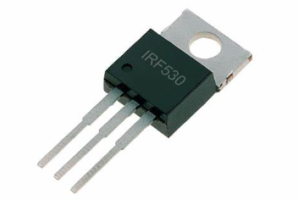
All About the IRF530 MOSFET
on November 14th

LM555 Timer: Pinout, Features, and Datasheet
on November 13th
Popular Posts
-

What is GND in the circuit?
on January 1th 3184
-

RJ-45 Connector Guide: RJ-45 Connector Color Codes, Wiring Schemes, R-J45 Applications, RJ-45 Datasheets
on January 1th 2755
-

Understanding Power Supply Voltages in Electronics VCC, VDD, VEE, VSS, and GND
on November 18th 2443
-

Fiber Connector Types: SC Vs LC And LC Vs MTP
on January 1th 2221
-

Comparison Between DB9 and RS232
on January 1th 1842
-

What Is An LR44 Battery?
Electricity, that ubiquitous force, quietly permeates every aspect of our daily lives, from trivial gadgets to life-threatening medical equipment, it plays a silent role. However, truly grasping this energy, especially how to store and efficiently output it, is no easy task. It is against this background that this article will focus on a type of coin cell battery that may seem insignificant on the...on January 1th 1810
-

Understanding the Fundamentals:Inductance Resistance, andCapacitance
In the intricate dance of electrical engineering, a trio of fundamental elements takes center stage: inductance, resistance, and capacitance. Each bears unique traits that dictate the dynamic rhythms of electronic circuits. Here, we embark on a journey to decipher the complexities of these components, to uncover their distinct roles and practical uses within the vast electrical orchestra. Inductan...on January 1th 1767
-

CR2430 Battery Comprehensive Guide: Specifications, Applications and Comparison to CR2032 Batteries
What is CR2430 battery ?Benefits of CR2430 BatteriesNormCR2430 Battery ApplicationsCR2430 EquivalentCR2430 VS CR2032Battery CR2430 SizeWhat to look for when buying the CR2430 and equivalentsData Sheet PDFFrequently Asked Questions Batteries are the heart of small electronic devices. Among the many types available, coin cells play a crucial role, commonly found in calculators, remote controls, and ...on January 1th 1745
-

What Is RF and Why Do We Use It?
Radio Frequency (RF) technology is a key part of modern wireless communication, enabling data transmission over long distances without physical connections. This article delves into the basics of RF, explaining how electromagnetic radiation (EMR) makes RF communication possible. We will explore the principles of EMR, the creation and control of RF signals, and their wide-ranging uses. The article ...on January 1th 1728
-

Comprehensive guide to hFE in transistors
Transistors are crucial components in modern electronic devices, enabling signal amplification and control. This article delves into the knowledge surrounding hFE, including how to select a transistor's hFE value, how to find hFE, and the gain of different types of transistors. Through our exploration of hFE, we gain a deeper understanding of how transistors work and their role in electronic circu...on November 18th 1717





